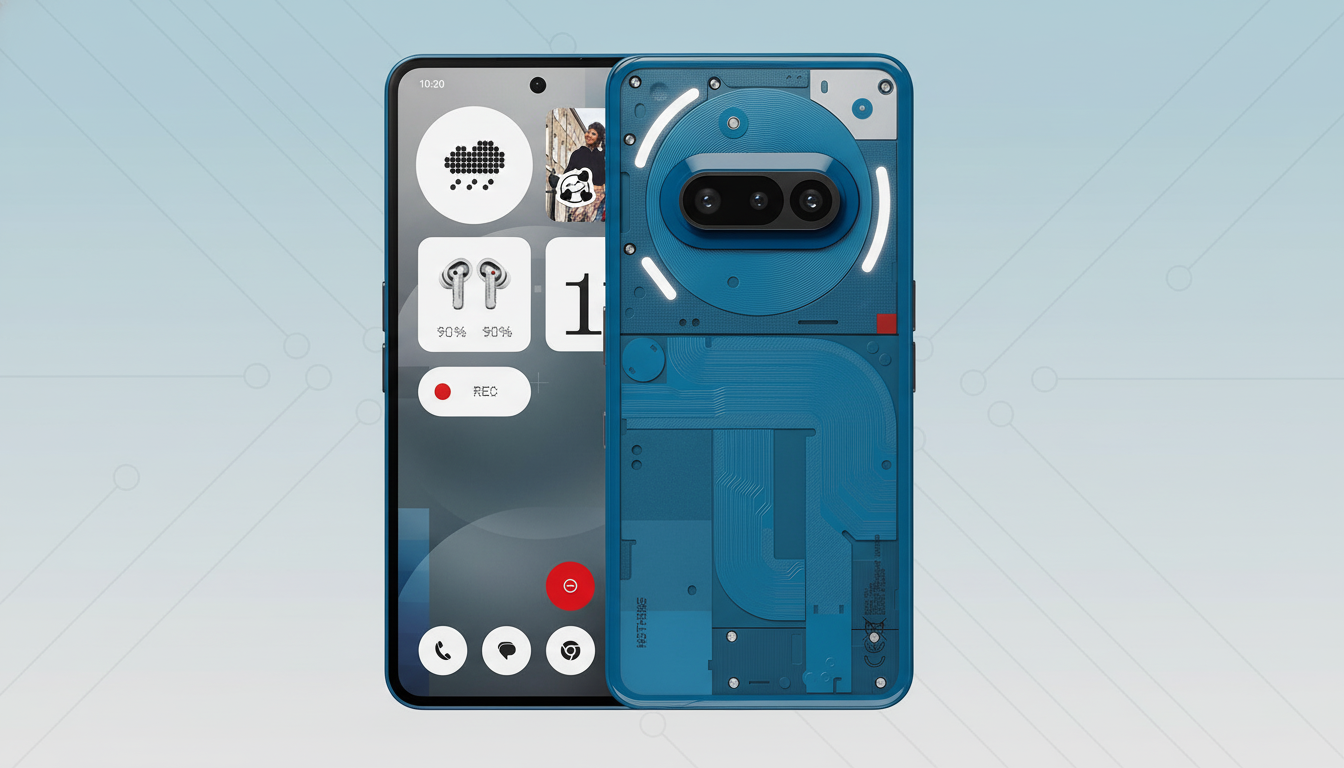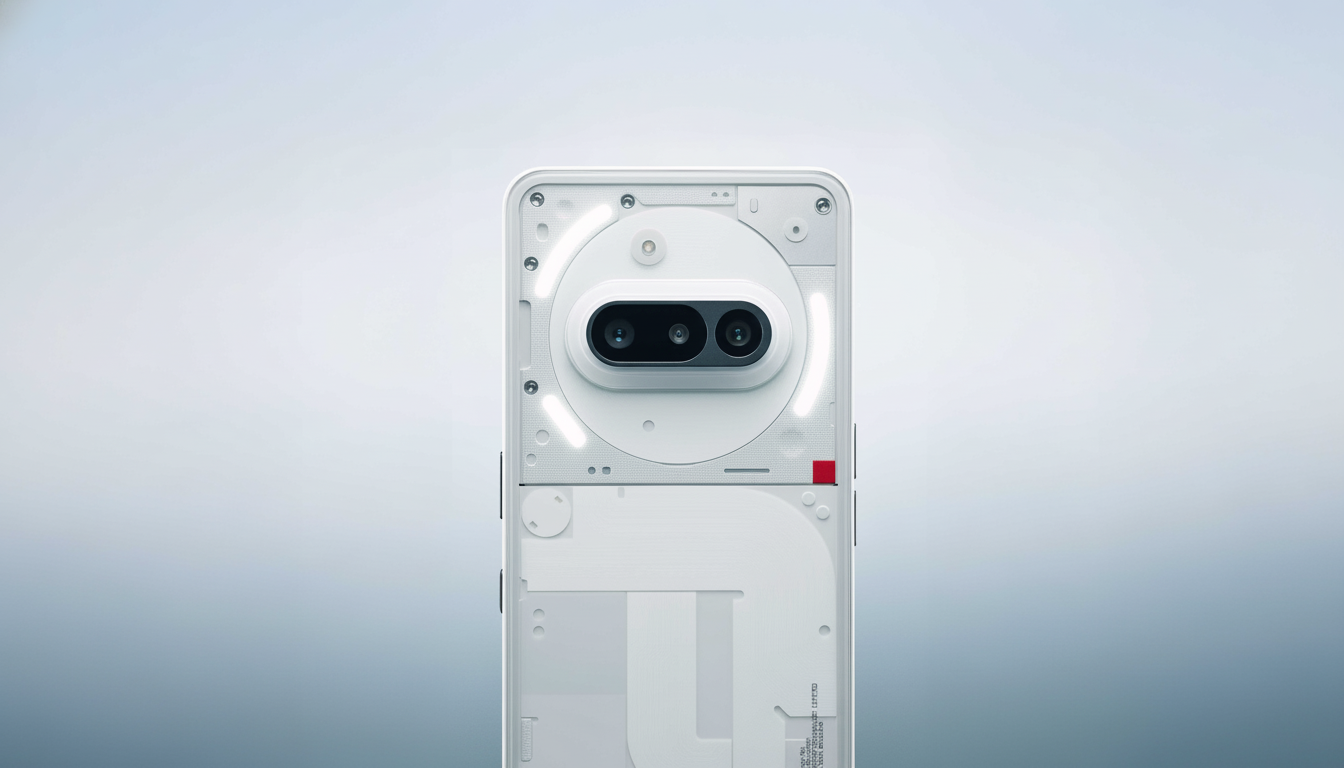Nothing is trying to pre-empt a brewing backlash. In a new company blog post, co-founder Akis Evangelidis details why certain future phones will come with third-party partner apps and a lock screen feature called Lock Glimpse, which early adopters have already accused of being bloatware. The pitch: leave the preloads light, simple to uninstall, and use the proceeds to help offset increasing hardware costs without also passing those on to buyers in higher prices.
What Nothing Is Adding on Upcoming Phone Models
Nothing confirms this means some non-flagship models will ship with a “curated selection” of apps users like outfitting on day one, such as Instagram. The company says that these won’t muddy the Nothing OS’s clean aesthetic (and that some degree of integration is required to make them operate), and deep integrations can actually be used to streamline performance, not bog it down, with preloaded apps removable after the fact.

Meanwhile, Lock Glimpse is the most controversial piece of tech and is currently being tested in the Android 16–based Nothing OS 4.0 beta for Phone 3a and 3a Pro.
Fans are concerned that it amounts to an advertisement surface on the lock screen. No word yet on whether users will have the ability to take full control over how it behaves and is visible. In addition to Lock Glimpse, the beta introduces a new “Stretch” camera preset; however, it’s the lock-screen experience that’s causing heads to turn.
The bloatware business case and Nothing’s rationale
Evangelidis couches the decision in economic terms. Component prices — the bill of materials, or BOM — continue to be big for smaller OEMs without scale. Industry teardown companies such as Counterpoint Research regularly find that the components make up most of the cost of a phone, often more than 60%–70% of the retail price when including displays, chipsets, memory, cameras, and RF chips. Bigger brands like Apple offset that shortfall with earnings from services and software, from search distribution to app partnerships and in-OS promotions.
Nothing — another young player who doesn’t have a services engine — says partner apps and a curated lock screen surface provide another path to diversified revenue. The company’s case, in that regard, is pretty straightforward: investigate sustainable models so hardware can remain competitive and the need to pass additional cost onto buyers diminishes. It’s a well-trodden path — Xiaomi has made significant services revenue by way of its software, while Samsung’s preloads and partnerships are ubiquitous — but it can be a minefield for user trust if the execution feels heavy-handed.
How Nothing says these features will roll out over time
Partner apps will not be available on all non-flagship phones, the company says: only a handful of them, and the list will remain short. Nothing emphasizes the three pillars of limiting selection, easy unselecting, and UI-owner responsibility. That includes unlinkable partner apps and granular settings for Lock Glimpse. The company further asserts that the integrations will be performance-oriented, a reference to common gripes about bloatware slowing down phones and draining battery.

Much of what separates tolerable from irritating is friction. Best practice in the industry is clear: provide an opt-in decision during setup, affirmatively describe what appears on the lock screen, and ensure one-tap uninstall. If Nothing adheres to that playbook, backlash might be dampened. If it’s burying toggles, or allowing partner content to be noisy, then the brand will just alienate its greatest supporters.
Community pushback and how it could impact the brand
Initial reactions in community threads are less-than-gentle: people paid Nothing for a system clean of OS overlays, not preloads or lock screen promotions. That tension is real. Amazon’s trial of lock screen ads for subsidized phones was dropped amid user backlash, and multiple Android manufacturers have been hit whenever they include too much preinstallation. For a business that sells itself as restraint and transparency, even one small misstep in this category can feel like a betrayal of brand identity.
There is also an extended regulatory environment to wade through. European regulators, under the auspices of a landmark act that would govern tech companies and their practices, have turned up scrutiny on defaults and preinstallation. Competition authorities in the UK and beyond have looked at how bundled apps and surfaces affect users’ choices. None of that outright bans partner software; it just makes the threshold for clarity, removability, and data handling much higher — especially on a lock screen customers glance at dozens of times daily.
What to watch next as Nothing tests Lock Glimpse
It will depend on the details whether this winds up as pragmatic or predatory. Key indicators are:
- How many partners ship against each model
- Whether Lock Glimpse is off by default
- The size of any promo content
- Whether one-step removal is really just that
Finally, battery impact, notification noise, and speed of software updates will be telling; partner layers must not hinder important security updates.
Nothing is betting that a subtle touch can fund the hardware without selling out its minimalist ethos. If it provides true control and holds the line on a footprint that’s relatively small, most consumers will probably shrug and move on. If not, the brand is at risk of paying more than it earns, in currency that matters above all else for a young OEM — trust.

